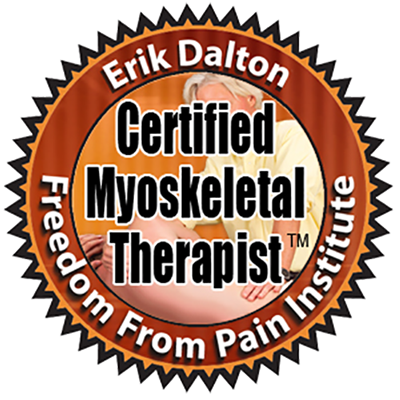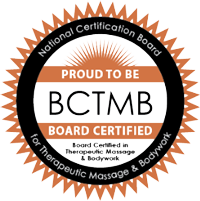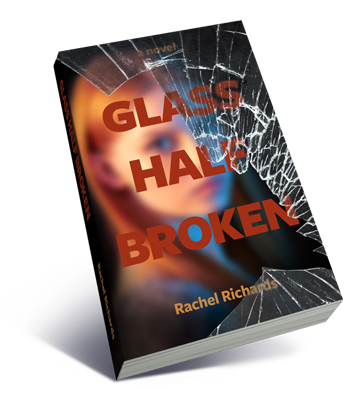News: August 2014
Unraveling the Mystery of Pain - Part 1
 In my years practicing massage therapy, I've seen numerous patients who were frustrated with their chronic mystery pain. Some had been to countless doctors and specialists, desperately searching for the answers to two key questions: Why do I have pain? And can you get rid of it? Unfortunately and all too often, health providers invalidate a patient's pain when the symptoms don't match a medical model of understanding that can provide them with an explanation. A doctor may tell a patient that there's nothing wrong with them, or even recommend a psychiatric consultation. Even worse, friends and family members may also be unsympathetic towards their loved one, failing to comprehend how a person can feel pain when there's nothing apparently wrong. And if something is wrong, they may wonder why the patient doesn't just go and have it fixed. Perhaps you can relate.
In my years practicing massage therapy, I've seen numerous patients who were frustrated with their chronic mystery pain. Some had been to countless doctors and specialists, desperately searching for the answers to two key questions: Why do I have pain? And can you get rid of it? Unfortunately and all too often, health providers invalidate a patient's pain when the symptoms don't match a medical model of understanding that can provide them with an explanation. A doctor may tell a patient that there's nothing wrong with them, or even recommend a psychiatric consultation. Even worse, friends and family members may also be unsympathetic towards their loved one, failing to comprehend how a person can feel pain when there's nothing apparently wrong. And if something is wrong, they may wonder why the patient doesn't just go and have it fixed. Perhaps you can relate.
Pain is very real, whether or not its cause is apparent on diagnostic imaging. And a lack of validation and compassion can hinder or even prevent a patient's recovery. The International Association for the Study of Pain defines pain as "An unpleasant sensory and emotional experience associated with actual or potential tissue damage, or described in terms of such damage." Notice this says sensory AND emotional. In other words, physical pain and emotional volatility go hand in hand. When you have pain, there is both a sensory and an emotional component. For instance, if we compared a brain scan of someone who has fractured their leg to that of someone going through a divorce, we would see many similarities between the two images. This has positive implications for treatment strategies. An ease of physical pain simultaneously benefits a person's emotional state, and vice versa.
The pain definition also has the phrase, "actual OR potential tissue damage." You do not have to have an actual injury to have pain! To use a crude example, torture victims are first shown the instrument with which they will be tortured. The mere sight of such a device causes the victim to actually feel pain before they are ever touched. Furthermore, it is common for a person to experience pain long after an injury has healed. (We'll explore that mechanism in another article.) In fact, this is in the very definition of chronic pain: "Pain that outlasts normal healing time or after the noxious stimuli is no longer active."
People with chronic pain need validation, and what better way to validate someone's pain than with therapeutic touch. When I place my hands where my client is hurting, I am often met with a sigh of relief or an exclamation, "Yes! That's what I've been talking about." An interesting study revealed that an injection is much more effective when administered by a doctor rather than intravenously. It makes a big difference when a patient is cared for by a person rather than left alone with a machine. The connection between the patient and the practitioner is the most powerful predictor of successful therapeutic outcome. This connection is known as "therapeutic alliance" and holds true for all forms of healthcare, from massage therapy to surgery to psychotherapy. As a massage therapist, I am glad to be in a position to give a person suffering from chronic pain the validation, compassion, and hands-on treatment that they desperately seek.
Source: Douglas Nelson, The World Massage Conference (This newsletter begins a short series of articles dedicated to exploring and unraveling the mystery of pain. So stay tuned!)
What is that strange crunching sound?
Do you ever hear or feel a crunching, popping, or cracking sound when you move your joints? It's called joint crepitus and, although very common, tends to be worrisome. But don't fret. Crepitus is rarely an indication of a serious condition. Most of the time those unsettling sounds are caused by one of the following:
- Taut Soft Tissue Restriction: This is the most common cause of joint crepitus, and occurs when a joint lacks mobility due to restrictions in the tissue (hypomobility). As the joint moves through its range of motion, there is a point at which a taut band of tissue will come into contact with underlying bony contour. Clicking is then heard as the taut band strums over the bumpy surface of the bone. Over time, this can cause fraying, inflammation, and eventually pain in the tissue. It's best to avoid this by treating the taut tissue with massage and gentle stretching, thereby improving the mobility and integrity of the joint.
- Joint Release: If you've been to a chiropractor, you are familiar with the popping sounds your joints make during adjustments. A joint release cannot occur multiple times in succession in the same joint, unlike other forms of joint crepitus. If this sounds familiar, there is no reason for concern. In fact, it's usually a good sign, indicating skeletal realignment and increased joint mobility.
- Excessively Loose Soft Tissue: The opposite of hypomobility, hypermobility means a joint has excessive movement due to loose soft tissue - an excessively long ligament for example. When a hypermobile joint moves to its outer ranges of motion (beyond the end ranges of motion for which the joint was originally intended), the loose bands of soft tissue rub over bumps on underlying bone causing clicking sounds in the joint. A person with hypermobile joints would benefit from exercises that increase strength and stability.
- Degenerative Joint Surface: A joint is where two bones meet. When the connecting surfaces of those bones suffer from degeneration, they become rough and irregular. Then when movement occurs, the rough surfaces grind along each other resulting in crepitus that sounds and feels similar to rubbing a surface with sandpaper. Degeneration of a joint often results in pain or discomfort. For this condition, I would recommend working with a massage therapist who can help to improve postural alignment in order to alleviate undue stress on the joint, and increase the joint fluid (synovial fluid), which lubricates and cushions the boney surfaces and nourishes the entire joint. This can be achieved with manual therapy, movement, and corrective exercises.
I hope this helps to ease some of your concerns as you click, clack, and crunch your way through your day!
Source: Massage Therapy Journal, Summer 2014
What's new with me ...
I'm very excited to be taking a continuing education course entitled "Body Reading Assessment and Therapeutic Strategies," focusing on assessing and treating misalignments in the body in order to relieve pain and facilitate healing. I am passionate about this type of work and am enjoying the opportunity to delve deeper into this topic. I look forward to incorporating new ideas and treatment strategies into my practice.
It's a busy summer with Sienna. She had her first trips to the beach and the zoo. Like her mommy, Sienna loves music and dancing! She's become particularly "Hokey Pokey" savvy. Sienna has also been developing her fine arts skills with sidewalk chalk. Click here for fun new photos and videos!

Call or text me today
917-359-8641
I'd be happy to answer
any questions you have!
Massage@Rachel-Richards.com
Subscribe to my Youtube channel!
Did you know?





